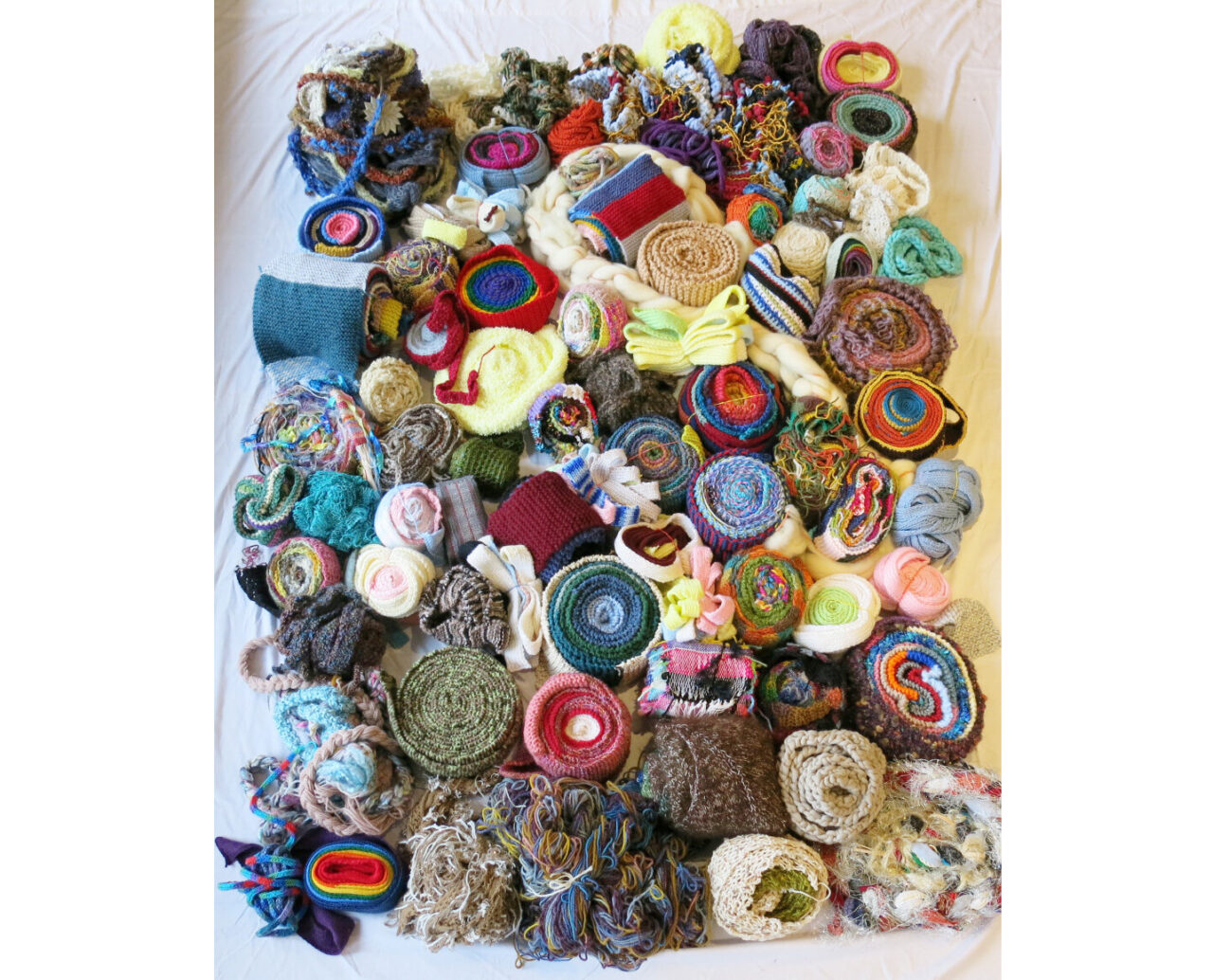Adrian Baker Uses Textiles from Hundreds of Participants for Ever-Evolving Art Installation

Posted on
The artist and recent ECU grad continues to find audiences and participants at home and abroad for Net-Work, her sprawling meditation on interconnection.
An ever-evolving textile artwork by artist Adrian Baker (MFA 2020) continues to find new audiences across the country and abroad, just as it continues to grow with contributions from participants across the globe.
Titled Net-Work, the ongoing participatory installation references the “vast underground webs of mycorrhizal fungi [which] enable trees to communicate,” according to an exhibition text.
“Wanting to promote awareness and stimulate dialogue on the animism of non-human life forms, I recruited collaborators to create ‘strands’ for a fibrous network of interwoven yarn symbolizing an underground network of roots and fungi,” Adrian writes. “I reasoned that inviting public participation into the creation process would encourage a wider engagement with environmental issues; in effect the installation would become a form of social activism to stimulate dialogue and raise awareness.”

Adrian Baker's Net-Work, installation view.
Currently, Net-Work is composed of nearly 300 individual, brilliantly coloured strands hand-crafted by 225 participants from across Canada, the U.S., and seven other countries. They are knitted, woven, crocheted, braided, and sewn from a range of materials, including synthetic yarns, hand-spun and dyed wool, torn fabric strips, dried reeds, cotton, jute, string, plastic, burlap, beads, shells, and wire.
And the work is never shown the same way twice.
“Like a forest, the installation continues to evolve and adapt to its environment, whether within a confined gallery space or outdoors,” Adrian tells me. “I approach each installation with the understanding that flexibility is imperative.”

Adrian Baker's Net-Work, in process.
The work was also recently shortlisted for the Berlin-Based Social Art Award, and talks are in progress for an exhibition of Net-Work in Europe. Earlier this year, the Thunderbird Sisters Collective, a group of Ontario-based Indigenous artists, contributed a “complex, five-metre long, mixed-media strand” for the installation. As regular participants in the annual No Borders Art Festival, the collective invited Adrian to install Net-Work on their land in nearby Pontiac, Que., as part of the festival.
An upcoming exhibition at the Mississippi Mills Textile Museum in Almonte, Ont., has also been confirmed, and Adrian says she continues to receive messages from organizations interested in showing the work, and new hand-crafted strands from individuals to add to the work’s next iteration.
Adrian first put out a call for strands via email and social media in December, 2019, while studying as an MFA student at Emily Carr University. She asked for contributions representing “the underground network of living things in the forest.” Strands were to be no larger than six inches wide and 15 feet long. Participants were to encouraged to reuse and recycle materials rather than purchase them new.

The number of responses to Adrian's call for strands quickly began to grow.
Over the next five months, Adrian was inundated with nearly 250 hand-crafted strands. In part, she attributes this extraordinary public response to “a critical mass of people’s interests in thinking about symbiotic ways of relating to the world.” But another major global event was set to emerge only weeks after she first called for participants.
COVID struck, and people suddenly found themselves isolated at home, divorced from their regular infrastructures of occupation and activity. Hand-crafting strands for a participatory artwork may have felt like an ideal way to reach out and develop connections during lockdown, she suggests.
“The pandemic made visible just how delicate and intertwined our world is,” reads an exhibition text. “[Net-Work], through its formal structure and community-centred collaboration, acts as a model for [a] human worldview that might better recognize and live within an engaged equilibrium with our non-human kin.”

One of Net-Work's various installations.
A painter for many years, Adrian says the success of Net-Work has in no way deterred her from pursuing her passion for working with a brush on canvas. But she is excited to continue developing Net-Work, and to work with participatory forms for the foreseeable future.
“Participatory art — or art as social activism — has planted the seeds for new directions that I am excited to explore,” she says. “I visualize a future working across several different genres, combining different media, and exploring new ways of communicating through my art.”
Find out more about Net-Work, and about Adrian’s practice more broadly, at adrianbakerart.com.